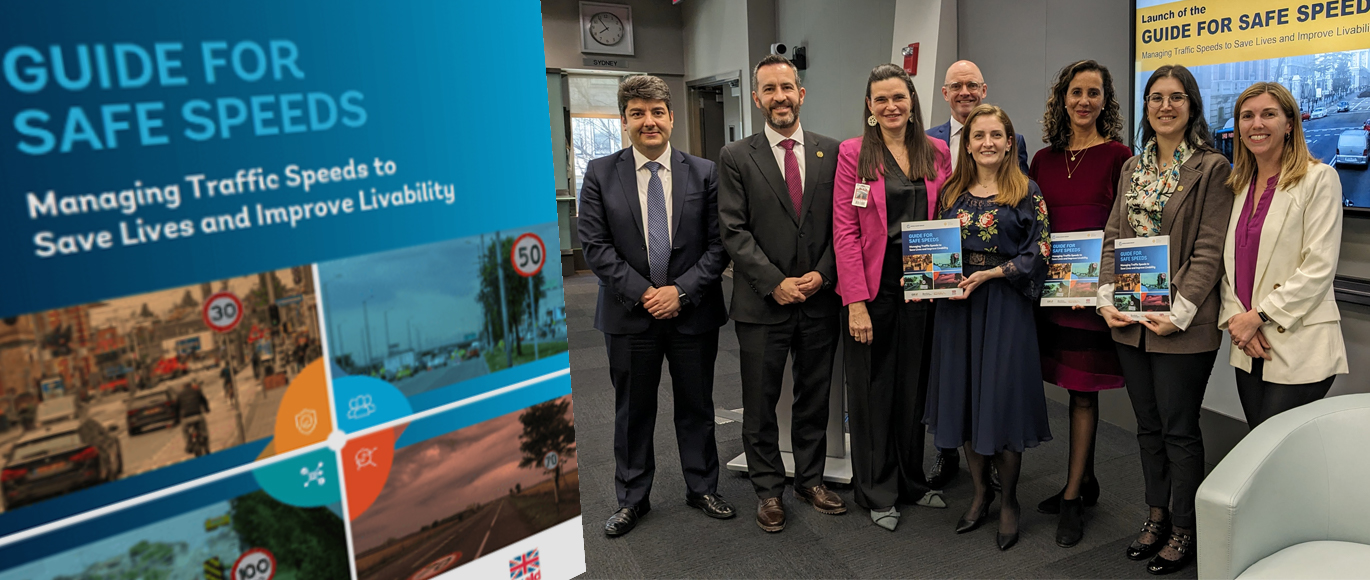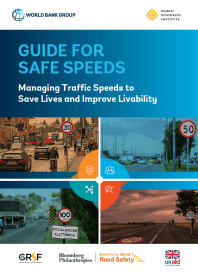
Launch of the Guide for Safe Speeds
March 21, 2024
The “Guide for Safe Speeds: Managing Traffic Speeds to Save Lives and Improve Livability” was launched at the annual Transforming Transportation conference in Washington D.C. on Thursday, March 21, 2024.
The new guide—a collaboration between the World Bank’s Global Road Safety Facility (GRSF) and the World Resources Institute (WRI), with support from the Bloomberg Philanthropies Initiative for Global Road Safety and UK Aid—is targeted at road safety practitioners seeking to better manage speeds in their communities and jurisdictions.
The guide contains all the information that decision-makers need to select, implement, and support speed limits that are safe for all. A primary feature of the guide is its comprehensiveness. The guide covers all types of roads—from city streets to inter-urban roads and motorways (existing or new); all types of road users—from vulnerable road users such as pedestrians and cyclists to heavy motorized traffic; all types of speed limit changes—from national general speed limits to localized changes based on risk factors; all types of challenging constraints—from lack of resources to lack of data; and all types of countries—from low-income to high-income.
Video recording of the launch event
Said Dahdah (Head of GRSF and Global Lead for Road Safety, World Bank) provided welcoming remarks, reflecting on the development and importance of the new guide. Claudia Adriazola-Steil (Health & Road Safety Program Director, WRI) provided remarks on the benefits of speed management within a Safe System approach and moderated the panel discussion.
Rebecca Bavinger (Public Health Team, Bloomberg Philanthropies) highlighted the importance of including the latest research findings in the new Guide for Safe Speeds, and drew attention to GRSF’s Speed Management Hub as an excellent source of speed management materials and guidance. Maria Marcela Silva (Regional Director for Infrastructure, Latin America and the Caribbean, World Bank) drew links between speed management and the broader development objectives of the World Bank. Rogier van den Berg (Global Director, WRI Ross Center for Sustainable Cities) emphasized the crucial role of safety-oriented city design in effective speed management. Liz Jones (Senior Transport Advisor, UK Aid) elaborated on the interaction between speed management and economic development. Benacer Boulaajoul (General Director, Morocco National Road Safety Agency) outlined the challenges and opportunities present in implementing speed management practices in Morocco.

Welcoming remarks and panel discussion
Following the panel discussion, the report’s authors—Alina F Burlacu, Eva M Eichinger-Vill and Blair Turner from the World Bank, and Siba El-Samra from WRI Ross Center for Sustainable Cities—presented the main contents of the new guide. This included the key principles for selecting speed limits (safety for all, community wellbeing, network availability, and predictability) as well as the newly developed Roads-for-Life framework that matches road use, speed limits, and road design elements. The framework focuses not only on the movement of vehicles and goods but also on the presence of vulnerable road users, and leads to speed limits that are safe for all road users and is applicable on all types of urban and rural roads.

Authors present the content of the new guide
The presenters demonstrated how safe speeds can be determined and implemented, and how a comprehensive speed management strategy can systematically tackle the problem of high vehicles speeds in a city or country. The presenters also outlined speed management interventions with a proven track record of success in the areas of land use planning, infrastructure, enforcement, vehicle technology, and public communications campaigns. Finally, the presenters explained how political and community-based barriers to changing traffic speeds—which are often based on a lack of knowledge or misunderstandings—can be overcome.

